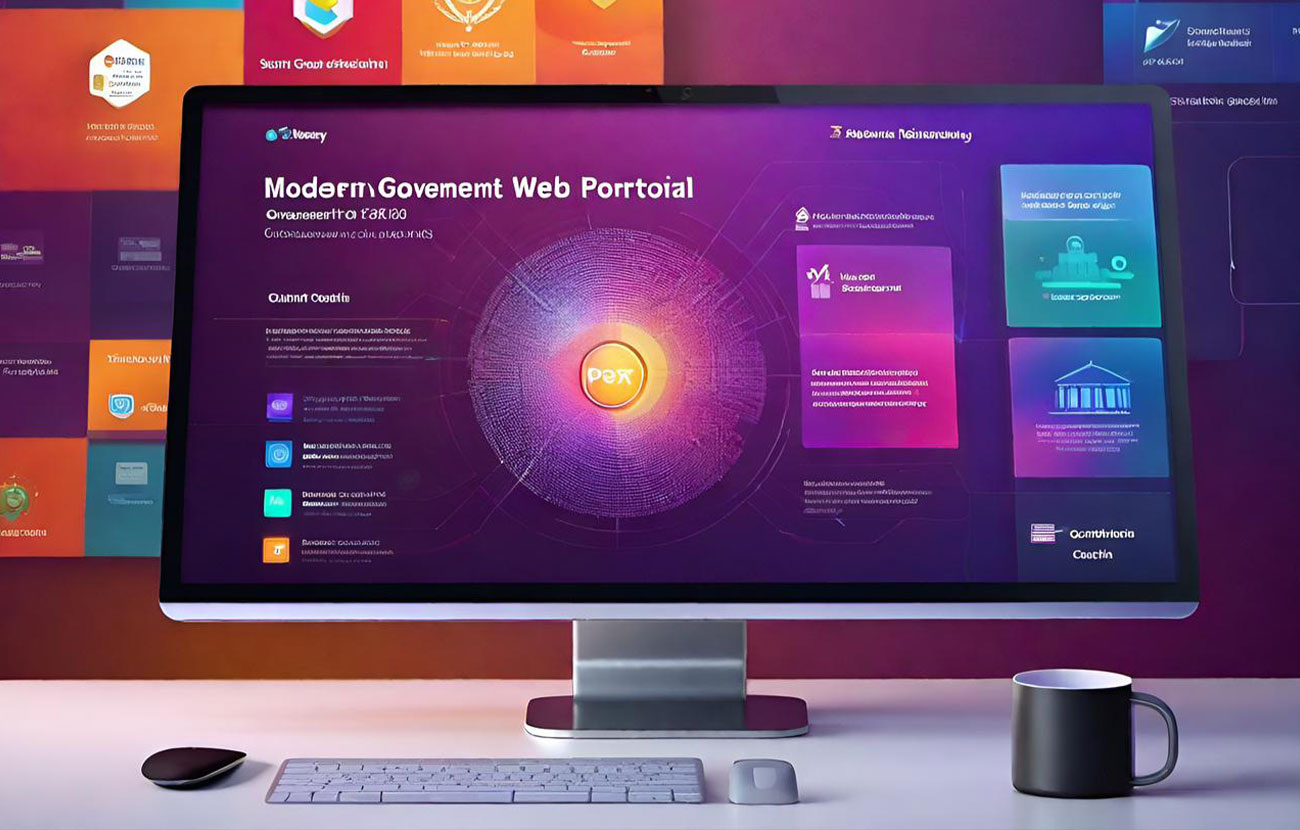What Is The IT Strategy And Roadmap Services?

IT strategy and roadmap services are essential in the digital age, acting as a business’s map and compass. They define how technology will meet business goals, involving assessment, strategy development, and roadmap creation. This ensures focused, efficient, and adaptable IT investments, improving ROI and facilitating successful digital transformation.
 Understanding IT Strategy
Understanding IT Strategy
A. Definition and Components:
- Concept of IT Strategy: Explain that an IT strategy is a blueprint for how technology will be used to achieve the organization’s overall business goals. It defines where the organization wants to be in the future and the technology-driven initiatives needed to get there.
- Core Components:
- Vision: The aspirational and long-term picture of how technology will transform the organization and positively impact stakeholders.
- Mission: The overarching purpose of the IT department and its contribution to the overall business objectives.
- Goals: Specific, measurable, achievable, relevant, and time-bound (SMART) statements that align with the vision and mission. Examples could be achieving operational efficiency, enhancing customer experience, or increasing market share through technology.
- Objectives: More detailed and incremental steps to achieve the goals. Often broken down into short-term (1-2 years), medium-term (3-5 years), and long-term (5+ years) horizons.
- Alignment with Business Strategy: Emphasize that the IT strategy is not an independent document but serves as a sub-strategy derived from the larger business strategy. Discuss frameworks like SWOT analysis and PESTLE analysis that help identify market trends, opportunities, threats, and internal strengths/weaknesses to inform IT strategy development.
- Role of Technology Trends and Market Analyses: Explain how emerging technologies like artificial intelligence, cloud computing, blockchain, and IoT can disrupt industries and create new business opportunities. Highlight the importance of continuously monitoring technology trends, conducting market research, and analyzing competitor initiatives to inform and refine the IT strategy.
B. Key Strategic Areas:
- Infrastructure and Systems:
- Modernization: Discuss the need to upgrade outdated hardware and software to improve performance, security, and compliance. Explore options like server virtualization, containerization, and infrastructure as code (IaC).
- Cloud Adoption: Analyze the potential benefits of migrating infrastructure and applications to the cloud for cost savings, scalability, and flexibility.
- Security: Outline strategies for strengthening cybersecurity posture, managing risk, and complying with relevant regulations. Explore approaches like identity and access management (IAM), data loss prevention (DLP), and threat detection and response.
- Disaster Recovery: Discuss the importance of having a robust disaster recovery plan to protect critical data and ensure business continuity in case of outages or disruptions.
- Applications and Data:
- Software Development: Analyze the need for custom software development, adopting a low-code/no-code approach, or using off-the-shelf solutions.
- Data Management: Discuss strategies for data governance, data lakes, data warehouses, and data analytics platforms to empower data-driven decision making.
- Artificial Intelligence: Explore the potential applications of AI in areas like process automation, predictive analytics, and personalized customer experiences.
- People and Processes:
- Workforce Skill Development: Emphasize the need to invest in upskilling and reskilling employees to adapt to new technologies and processes.
- Change Management: Develop strategies for effectively managing the organizational and cultural changes associated with technology implementation.
- Collaboration Tools: Encourage the use of collaborative platforms and communication tools to break down silos and improve teamwork.
C. Importance of a Defined IT Strategy:
- Focus and Direction: Explain how a clear IT strategy provides direction for IT investments, preventing ad-hoc spending and ensuring projects align with overall goals.
- Resource Allocation: Discuss how the strategy helps prioritize initiatives and allocate resources (budget, personnel) efficiently.
- Communication and Collaboration: Encourage transparent communication of the IT strategy across departments, fostering alignment and collaboration between IT and business teams.
- Agility and Adaptability: Explain how a well-defined strategy enables the organization to adapt to changing market conditions, embrace new technologies, and seize emerging opportunities.
 Roadmap: Charting the Course
Roadmap: Charting the Course
A. Definition and Purpose:
- Beyond operational plan: An IT roadmap is not just a static plan; it’s a dynamic guide translating vision into action. It defines the “how” behind the “what” of the IT strategy, bridging the gap between aspirations and implementation.
- Concretizing goals: Imagine taking a complex puzzle with strategic objectives as the big picture. The roadmap provides the individual pieces – specific initiatives with defined timelines, resources, and dependencies.
- Living document: Emphasize that the roadmap is not a one-time creation but a living document that evolves alongside the organization’s needs and market dynamics.
B. Key Elements of a Roadmap:
- Prioritization frameworks: Go beyond simplistic urgency, complexity, and resource availability. Discuss advanced frameworks like MoSCoW (Must-have, Should-have, Could-have, Won’t-have) and RICE (Reach, Impact, Confidence, Effort) for prioritizing initiatives.
- Project plan granularity: Delve deeper into the “detailed project plans.” Discuss different levels of granularity for different phases – high-level for early stages, and progressively detailed as projects progress.
- Resource allocation beyond IT: Explain that resources can span beyond IT personnel and budget. Consider physical infrastructure, software licenses, external vendors, and training requirements.
- Monitoring and evaluation techniques: Introduce specific tools and techniques for monitoring progress, such as key performance indicators (KPIs), dashboards, and regular progress reports. Emphasize the importance of measuring both objective and subjective success metrics.
C. Benefits of a Well-defined Roadmap:
- Risk mitigation: Explain how a roadmap helps identify and mitigate potential risks by planning resource needs, sequencing initiatives, and establishing contingency plans.
- Transparency and accountability: Discuss how the roadmap creates a shared vision and assigns clear responsibilities, fostering accountability at all levels.
- Stakeholder engagement: Explain how visualizing the roadmap fosters buy-in and engagement from stakeholders, encouraging collaboration and ensuring alignment with strategic priorities.
- Agility and adaptability: Highlight how a flexible roadmap allows organizations to adapt to unforeseen challenges and capitalize on emerging opportunities without derailing the overall IT strategy.
Additional Tips:
- Provide real-world examples: To further illustrate the key elements and benefits, include brief examples of successful roadmaps implemented by different organizations.
- Offer tools and templates: Consider suggesting or linking to helpful tools and templates for roadmap creation and monitoring.
- Emphasize continuous improvement: Conclude by reiterating the importance of regularly reviewing and updating the roadmap to reflect changing priorities and technological advancements.
 The Role of Service Providers
The Role of Service Providers
A. Types of IT Strategy and Roadmap Services:
IT Strategy Development:
- Assessment Phase:
- Current State Analysis: Evaluating existing IT infrastructure, applications, data management practices, and security posture.
- Business Needs Alignment: Mapping business goals and objectives to technology capabilities and limitations.
- Competitive Landscape Analysis: Identifying industry trends, technology disruptions, and competitor strategies.
- Technology Evaluation: Exploring emerging technologies and assessing their potential impact on the business.
- Strategy Formulation:
- Vision and Mission Definition: Establishing a clear vision of where the organization wants to be and how IT will enable it.
- Goal Setting: Defining specific, measurable, achievable, relevant, and time-bound (SMART) goals for IT initiatives.
- Priority Identification: Ranking technology investments based on their potential impact on business objectives.
- Risk Assessment and Mitigation: Identifying and addressing potential challenges and risks associated with technology adoption.
Roadmap Creation:
- Initiative Breakdown: Decomposing strategic goals into tangible projects and activities.
- Sequencing and Prioritization: Establishing a logical order for project execution based on dependencies and resource availability.
- Timeline Development: Defining realistic timelines for each project phase, considering resource allocation and potential roadblocks.
- Budgeting and Resource Allocation: Estimating project costs and allocating resources (personnel, equipment, software) effectively.
- Change Management Strategy: Developing a plan to manage the human and organizational aspects of technology change.
Implementation Support:
- Project Management: Providing expertise in managing project scope, deadlines, budgets, and risks.
- Vendor Selection and Procurement: Assisting with identifying, evaluating, and selecting suitable technology vendors and solutions.
- Technology Deployment and Integration: Guiding the implementation and integration of new technologies with existing systems.
- Training and Support: Providing training for employees on new technologies and ongoing support to address challenges.
Governance and Monitoring:
- Performance Measurement: Establishing key performance indicators (KPIs) to track progress and measure success.
- Data Analysis and Reporting: Regularly analyzing data to identify areas for improvement and inform strategic decisions.
- Risk Management and Mitigation: Monitoring potential risks and proactively taking steps to mitigate them.
- Roadmap Adjustments: Adapting the roadmap as needed to address changing business needs and technology advancements.
B. Advantages of Partnering with a Service Provider:
- Access to Expertise and Industry Best Practices: Leverage the deep knowledge and experience of specialized consultants in various technology areas and industry sectors.
- Objectivity and Unbiased Recommendations: Receive independent advice and avoid potential biases that may arise from internal IT teams.
- Increased Efficiency and Reduced Workload: Free up internal IT resources to focus on core operations while the service provider handles strategic planning and implementation tasks.
- Continuous Support and Guidance: Benefit from ongoing expertise and support throughout the entire IT transformation journey, from strategy development to post-implementation optimization.
- Faster Time to Value: Access specialized skills and proven methodologies to accelerate the implementation of IT initiatives and achieve desired business outcomes quickly.
C. Choosing the Right Service Provider:
- Assessing Experience and Expertise: Evaluate the service provider’s experience in your specific industry and their expertise in relevant technology areas.
- Evaluating Track Record and References: Request case studies and references from past clients to assess their experience with the provider.
- Ensuring Alignment with Company Culture and Values: Choose a provider whose culture and values resonate with your organization to ensure a smooth working relationship.
- Clarifying Service Scope and Fee Structure: Clearly define the scope of services and ensure upfront transparency about project costs and billing methodology.
Conclusion
Recap of Key Takeaways:
In this exploration of IT strategy and roadmap services, we have navigated crucial terrain within the digital landscape. We’ve established that an IT strategy is not just a dusty document, but a dynamic blueprint for aligning technology investments with your business goals. This blueprint translates into a concrete roadmap, guiding you on the practical journey towards your digital aspirations.
Reiterating the Importance:
As the digital winds swirl around us, a defined IT strategy and roadmap is no longer a luxury, but a strategic imperative. Here’s why:
- Enhanced Competitiveness: In a data-driven world, leveraging technology effectively is the key to gaining and sustaining a competitive edge. A solid IT strategy helps you identify and capture the opportunities that technology presents, propelling you ahead of the competition.
- Improved Agility and Adaptability: Change is the only constant in the digital age. A roadmap equips you to navigate technological shifts and market disruptions with flexibility. By anticipating future needs and planning proactively, you’ll be ready to pivot and adapt when the unexpected arises.
- Strategic Resource Allocation: Resources are precious, and an IT strategy ensures you invest them wisely. By prioritizing initiatives and allocating budgets effectively, you avoid wasteful spending and maximize the return on your technology investments.
- Increased Efficiency and Productivity: By streamlining processes and implementing cutting-edge tools, your IT roadmap paves the way for operational excellence. This translates to greater efficiency, enhanced productivity, and a happier, more empowered workforce.
Seeking Professional Guidance:
Developing and implementing a successful IT strategy and roadmap requires careful planning and execution. If you’re unsure where to begin, don’t hesitate to seek professional guidance. Experienced IT consultants and solution providers can offer invaluable expertise, helping you craft a customized strategy and roadmap that perfectly aligns with your unique needs and aspirations.
Unlocking the Potential:
By leveraging the potential of IT strategy and roadmap services, you embark on a transformative journey. You equip your organization with the digital compass it needs to navigate the turbulent waters of the modern business landscape. So, chart your course with confidence, embrace the power of technology, and witness your organization reach its full digital potential.




